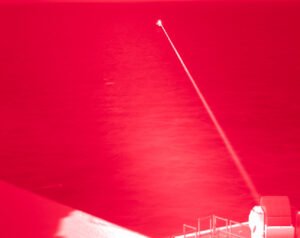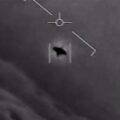The Defense Advanced Research Projects Agency (DARPA) has awarded a $1 million grant to fund the development of a military-grade prototype quantum laser that leverages the unique properties of quantum physics to overcome diffusion and data loss problems experienced by other state-of-the-art laser technologies.
The team from Washington University in St Louis receiving the DARPA grant says their goal is to use an aspect of quantum mechanics known as quantum entanglement to help communication lasers and lasers used for surveillance to operate in extreme temperatures, dense fog, or over extremely long distances.
“Quantum entanglement is a correlation between photons,” explained Associate Professor Jung-Tsung Shen from the university’s McKelvey School of Engineering and the leader of the team who received the grant. “We are trying to exploit the property of entanglement to do something innovative.”
To create their prototype quantum laser, Shen’s team will develop and test methods for what they are calling a “quantum photonic-dimer laser.” According to the press release announcing the project, this two-color photonic technology, “in which carefully controlled pairs of light particles or photonic dimers” are entangled, results in a coherent beam of laser beam made up of two different light wavelengths that contain the same information due to their state of entanglement. This two-colored laser loses significantly less information when passing through the atmosphere, even when experiencing adverse environmental conditions or traversing long distances.
“Photons encode information when they travel, but the travel through the atmosphere is very damaging to them,” Shen said. “When two photons are bound together, they still suffer the effects of the atmosphere, but they can protect each other so that some phase information can still be preserved.”
Along with graduate student Qihang Liu and colleagues from Texas A&M University’s Institute for Quantum Science & Engineering, Shen believes he can create a quantum photonic-dimer laser method so powerful they will entangle two-color photonic pairs at the rate of one million per second. That’s a rate the researchers say has “never been seen before.” The team will also be required to generate advanced algorithms for the efficient detection of entangled photonic pairs.
Notably, this is not the first time the U.S. military has explored using advanced laser systems in the 21st-century battlefield. In the last few years alone, military lasers have undergone testing by the U.S. Air Force, which is trying separate systems for their aircraft and counter-drone systems; the U.S. Navy, which successfully test-fired a laser back in 2022, and the U.S. Army, which is preparing to mount combat lasers to their Stryker combat vehicles. In March of this year, the Army actually deployed a military-grade laser system in the Middle East.


Aside from potential military applications, the research team believes their prototype system and its methods could be used in civilian applications that employ lasers in more extreme environments. These include advanced communications systems, quantum computing, and quantum imaging.
“The unique thing about this project is its dual focus on generating these novel strongly correlated quantum photonic states and developing the theoretical framework and advanced algorithms for their efficient detection, potentially revolutionizing quantum imaging and communication,” Shen said.
While this is only a two-year project, the team also believes their work is only a first step. In fact, according to Shen, science is just now beginning to explore the benefits of quantum entanglement to create any number of breakthrough technologies beyond their quantum laser.
“The entanglement can do many things that we can only dream of — this is just the tip of the iceberg,” Shen said.
Christopher Plain is a Science Fiction and Fantasy novelist and Head Science Writer at The Debrief. Follow and connect with him on X, learn about his books at plainfiction.com, or email him directly at christopher@thedebrief.org.

